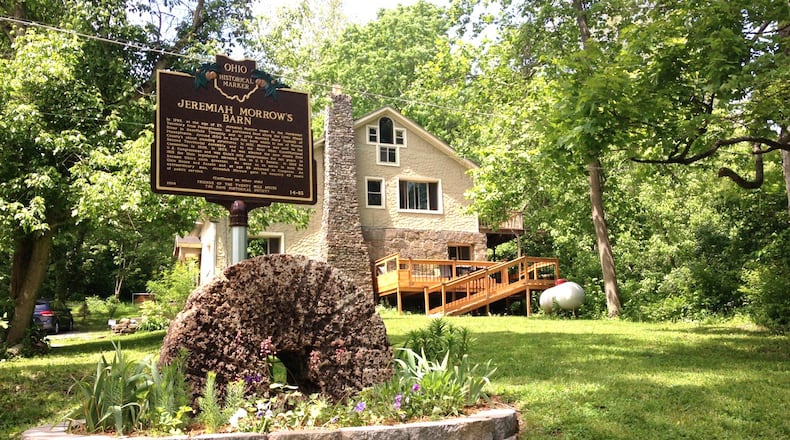Today, we feature the marker at the Jeremiah Morrow’s Barn, 8745 Davis Rd. in Maineville.
Marker location
Marker text
— Side A: In 1795, at the age of 23, Jeremiah Morrow came to the Northwest Territory from Pennsylvania. He purchased land along the Little Miami River in Deerfield Township and in 1799 married Mary Parkhill of Pennsylvania.
Around 1800 he built this barn which is one of Warren County’s oldest standing structures.
In 1801, Morrow was sent to the Second Territorial Assembly and to the first Ohio Constitutional Convention in 1802. In 1803, he was elected the new state’s first U. S. Congressman and was Ohio’s only congressman for ten years. In 1813 the Ohio legislature elevated him to U.S. Senate. In 1822 he became Ohio’s ninth governor. He went on to serve in both the Ohio House and Senate and at age 69 returned to Congress. An extraordinary man, Jeremiah Morrow gave his country 43 years of public service.
— Side B: Jeremiah Morrow built this barn with a room in front with a large stone fireplace and stairs leading to a loft. The back had stalls for horses and space for other livestock, which entered through rear doors.
He built a house next to the barn and in 1815 built a mill across the road. Morrow’s famous mill was razed in 1904 but the millrace is still there.
Morrow worked to get the Little Miami Railroad built; the line was Cincinnati’s first railroad. He served as its President without pay for over ten years and its first locomotive was named Gov. Morrow.
In 1845 Mary Parkhill Morrow died. The couple had eleven children but only one lived to old age. A man of great character, Jeremiah Morrow died at age 80 in 1852 and was buried in Union Cemetery.
The Ohio Historical Markers program
Beginning in the 1950s, the program encompasses over 1,750 unique markers that tell the state’s history as written by its communities.
Reading a marker
In addition to the text describing the historic marker, in the lower right is a number. This indicates the sequence number of the sign installed in a particular county.
Example above
Marker No. 14-83. The 14 indicates that this particular marker is the 14th marker to be erected in the county and 83 indicates that the marker is located in Warren County.
More information about markers
You can find information about all of Ohio’s historical markers at the Remarkable Ohio website.

